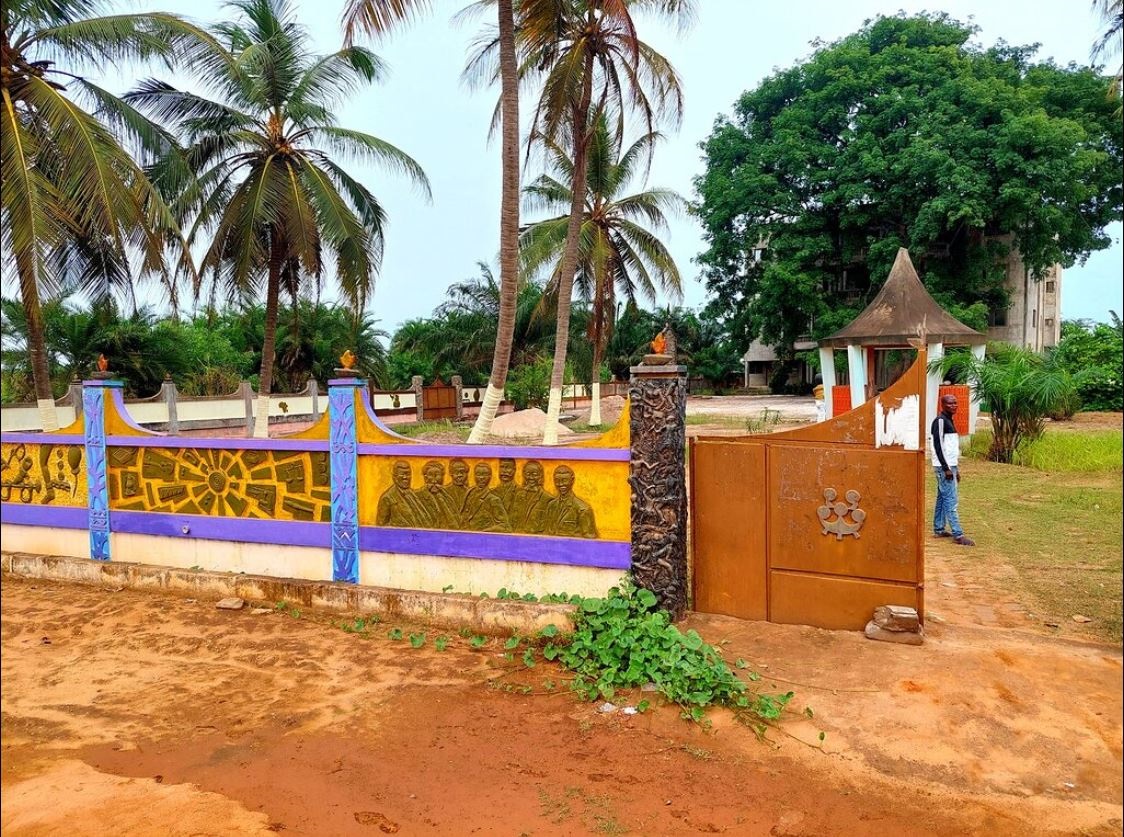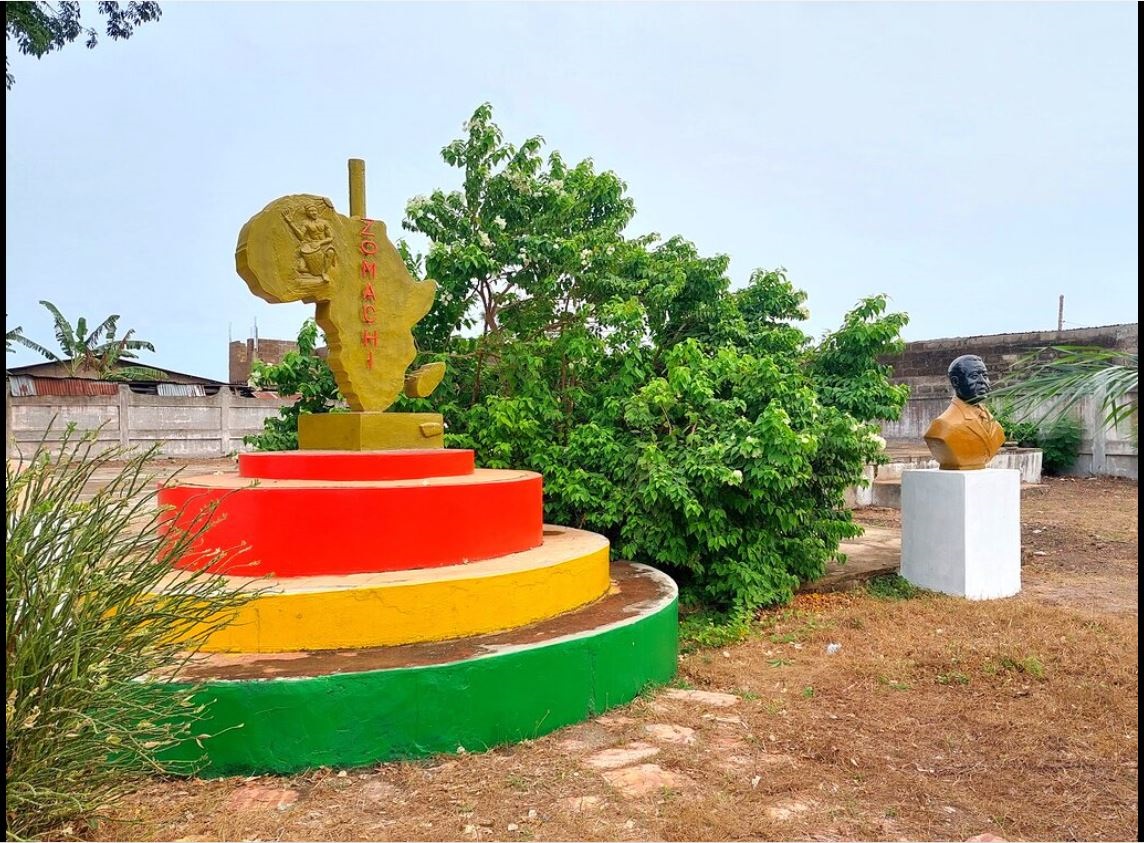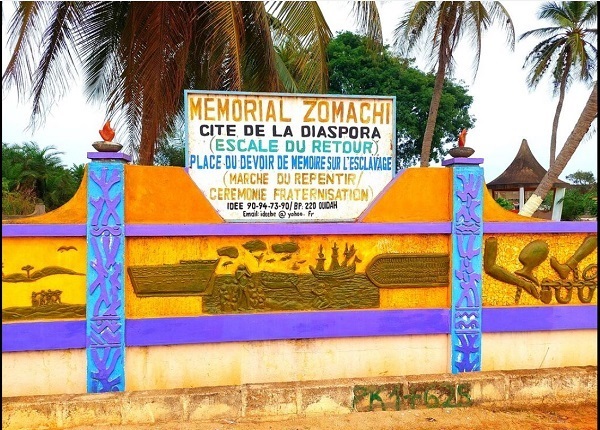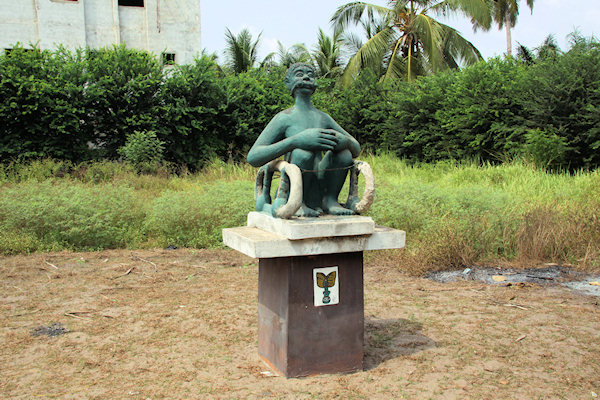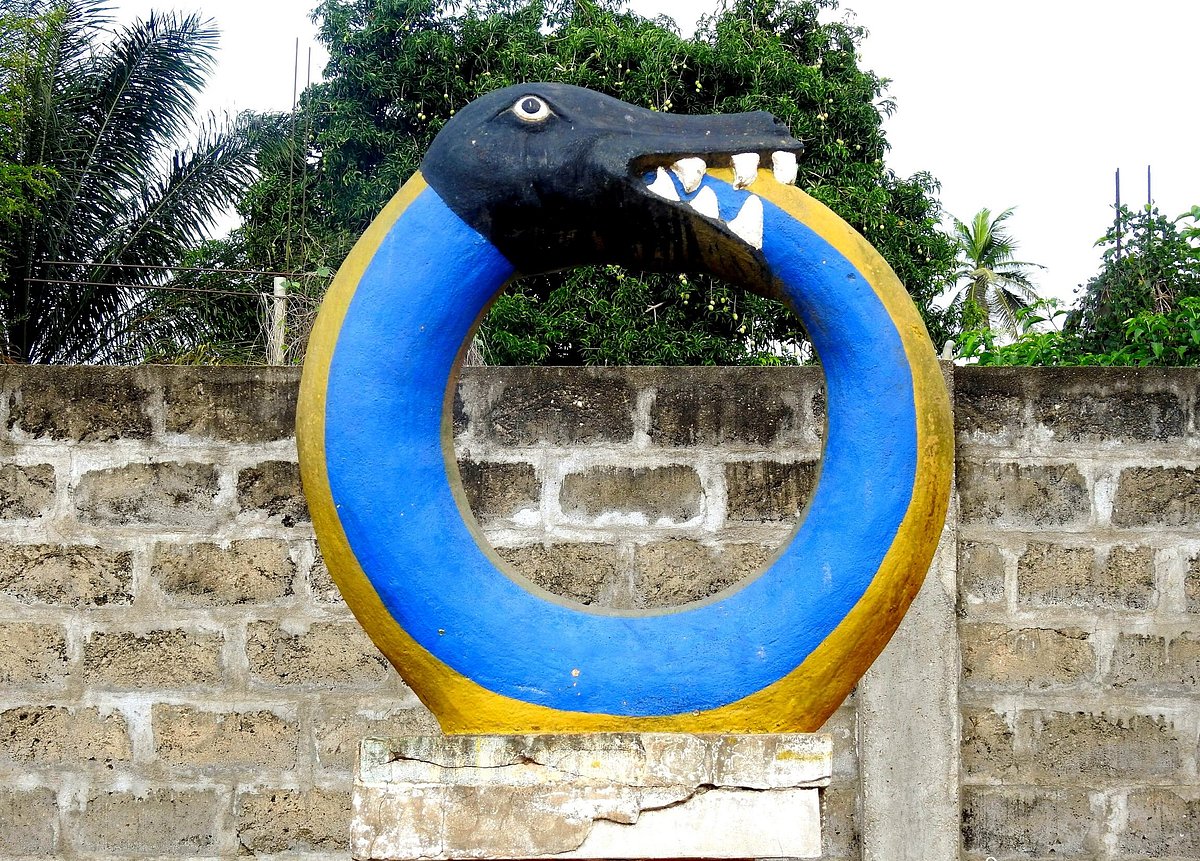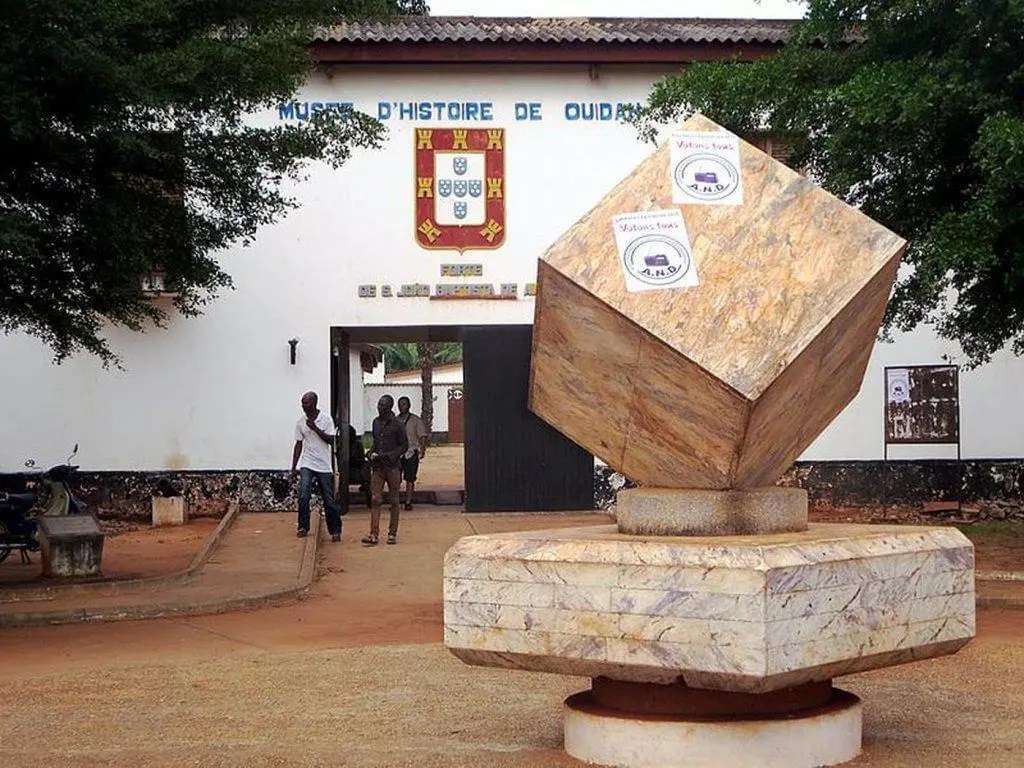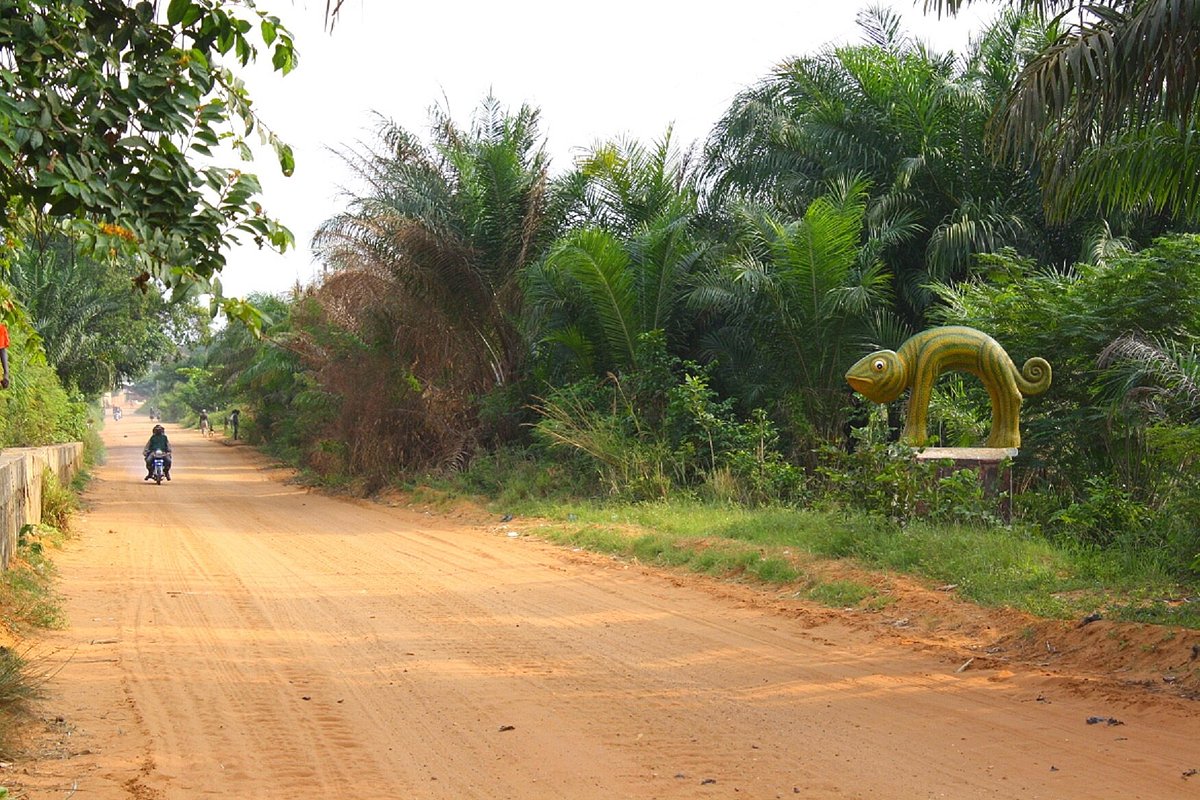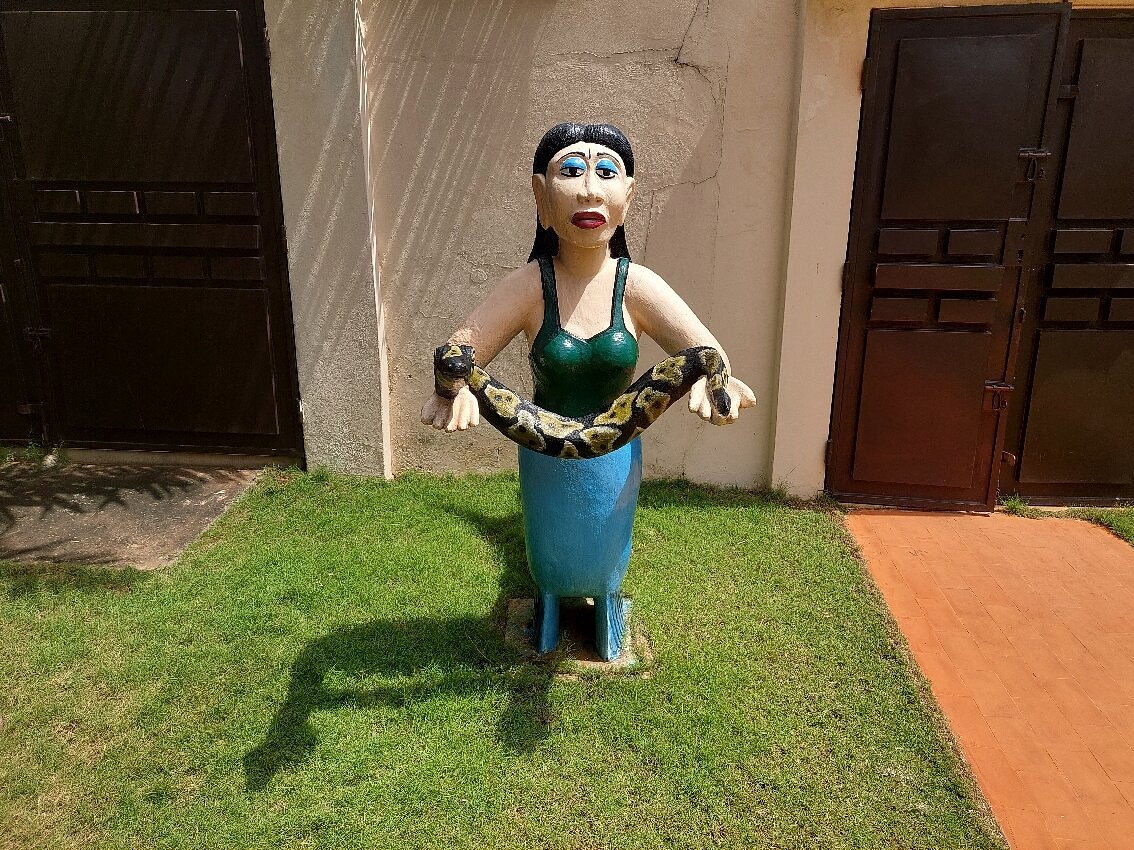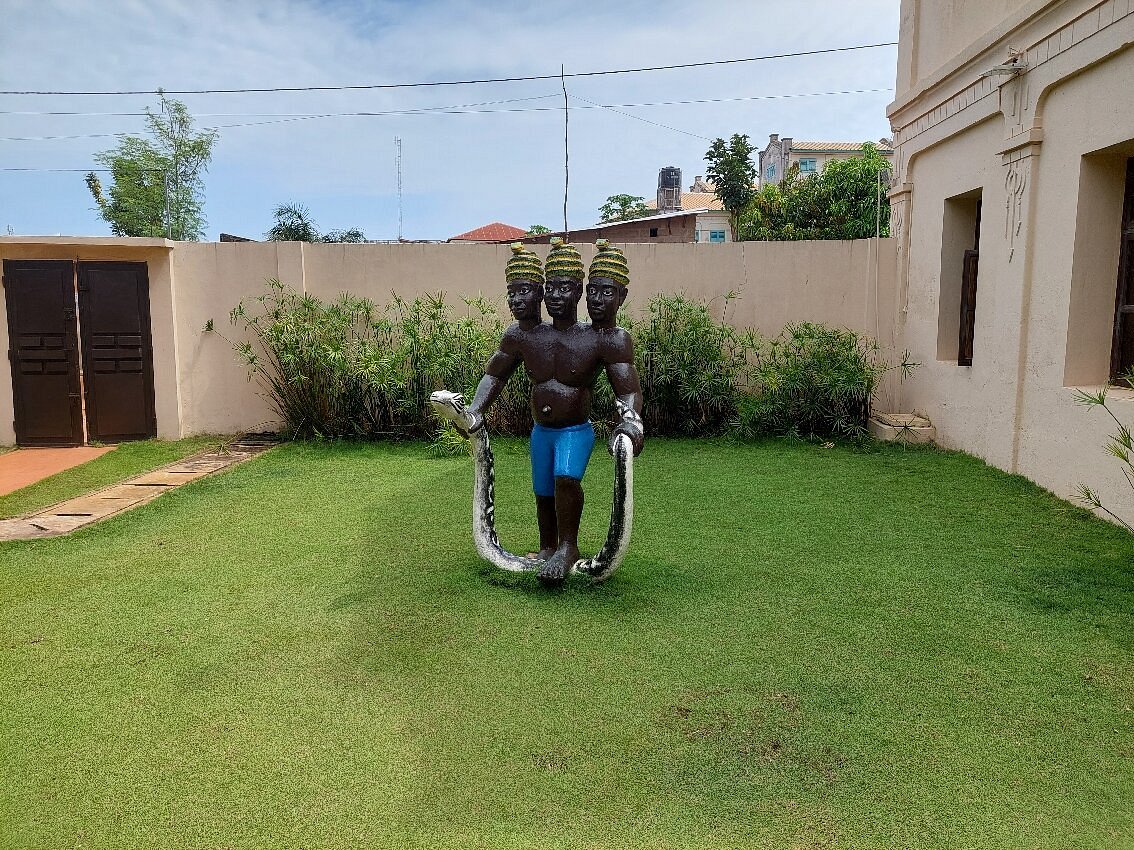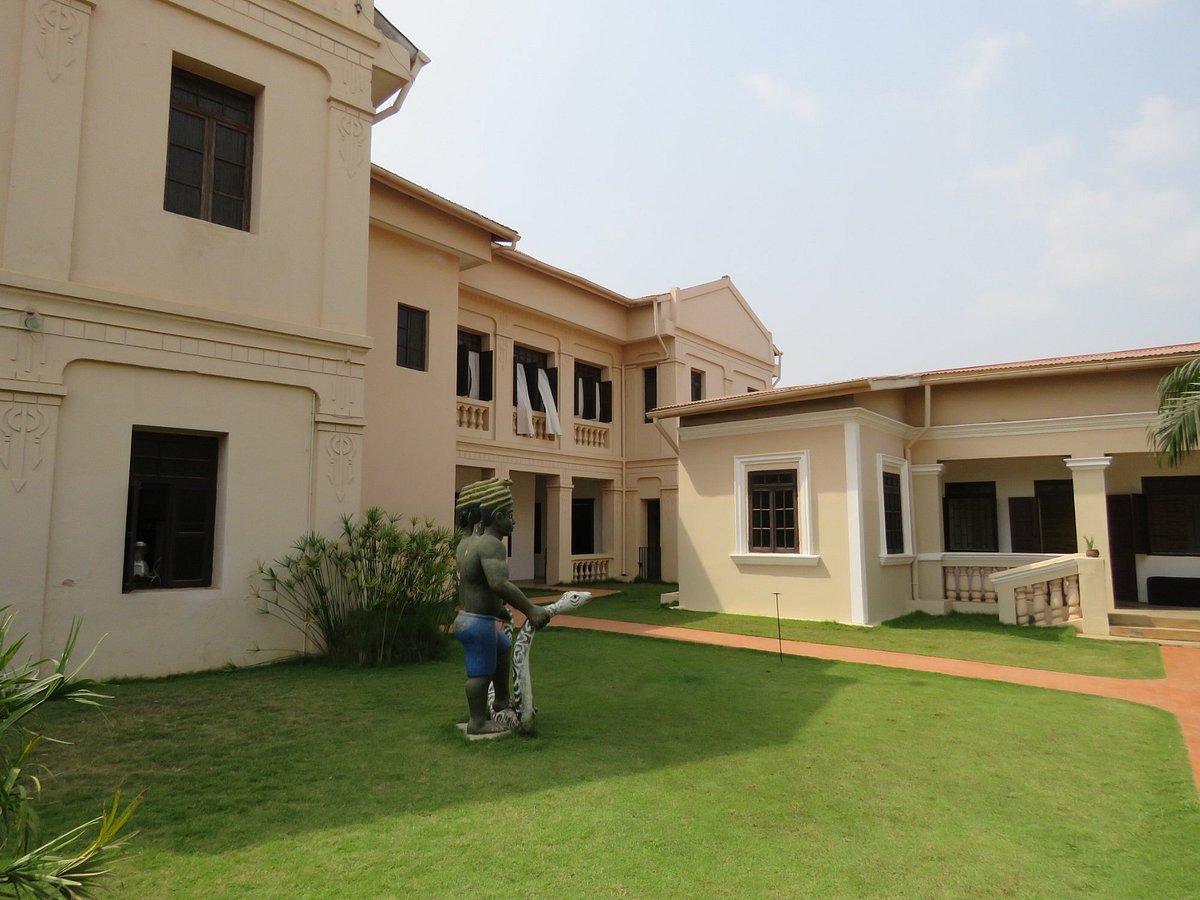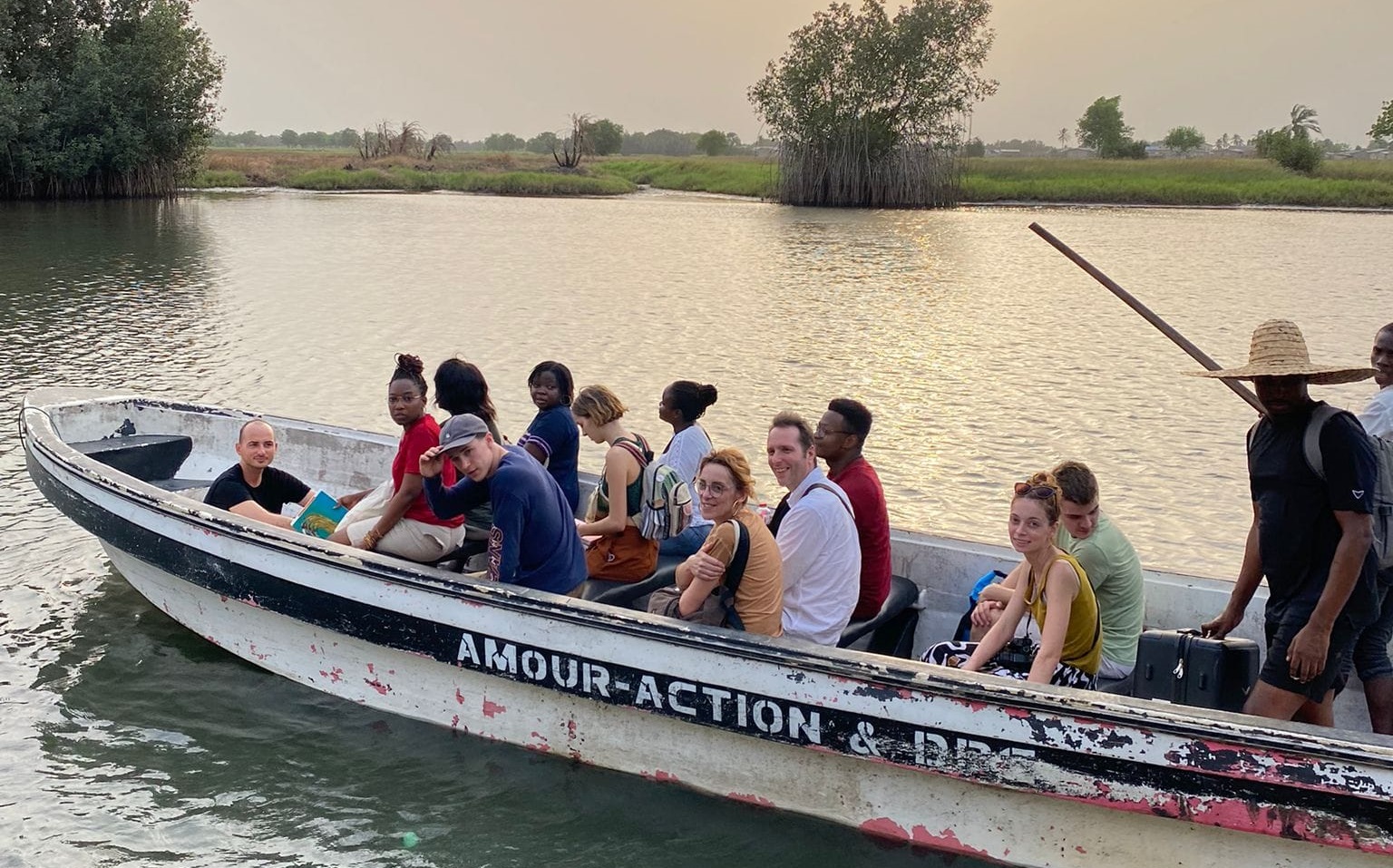This site, "Zomachi", a private initiative, is located along the Slave Route in Ouidah, a place of memory, sponsored by UNESCO. It is intended to bring together once a year, on the 3rd Sunday of January, the descendants of slaves taken by force to the Americas during the 17th to 19th centuries and the descendants of slave traders and executioners, including African auxiliaries. This assembly, which aims to be brotherly and commemorative, is the initiative of civil and religious personalities. Since January 18, 1998, the notables of Ouidah who, for some, are the descendants of their ancestors who collaborated in the trafficking of their fellows, gather at the auction place and go to the Zomachi place to ask for forgiveness.
The word Zomachi in the Fongbe language means "fire (in the sense of light) that never goes out ".
A large vertical stelle (6m X 4m), in a symbolic style, represents slaves in different situations. The creator of this work uses brown (body), black (chain) and blood red, with an assembly of small mosaic squares. He exposes the human mass in the form of silhouettes, in a linear fashion from top to bottom in successive slices spaced out by red stains of blood. From left to right, each slice represents successively, the shackled slaves seated, then the columns of the chained and finally on the right the slaves placed in "sardines" in the hold of the boat .
The site takes the form of an enclosure enclosed by walls, outside of which frescoes evoke the significant moments of the slave trade. We can see, the slaves chained in a row, the same ones shackled in the Zomai box, the transport boats to the Americas, preceded by canoe embarkations from the coast. Finally arrived at their destination, the hard work and the ill-treatment inflicted on them. In the enclosure, one can see a round kiosk with a thatched roof surrounded by the busts of the founders. On the right, a small monument, in a naive style, represents the African continent on which is painted the word Zomachi and an inlay of a seated tribal man, playing the Tam Tam.
At the bottom, behind a huge kapok tree with large roots with prickles, projects a huge 3-storey building with large galleries, but not plastered. It is planned to be the place of meetings, a museum and seminars. But the initiators having been too ambitious, it is not finished and is a bit of a task. For the Beninese, the kapok tree is a place of greeting by placing the hands on its trunk accompanied by prayers.
On the left, a large carved panel presents the black personalities who fought against slavery such as Toussaint Louverture (1743-1803) originally of Allada (Benin), the first head of a short-lived free Haitian state. We can also recognize Kwame Nkrumah (1909 -1972) First President of independent Ghana, philosopher and follower of Pan-Africanism; Harrier Tubman (1820-1913), American activist against slavery in the USA, etc.
About the Remembrance Memorial
AYIFFA TOURISM
Your travel advisor
Benin, now is the time to go! The country raises its head and shines... Represented by a tree standing in the heart of the African savannah, Benin is a country of centuries-old culture and tradition. Hospitable and welcoming people, green landscapes, sunny beaches, let yourself be carried away by the charm of the country which offers you the best of responsible tourism. Looking for a trip off the beaten track allowing you to experience idyllic moments in a natural and unique space, your travel agent opens the doors to a different world..
The most beautiful travel destinations in Benin
Guide to the most beautiful tourist destinations to discover during your trip to Benin
AYIFFA TOURISME
Destination 1: The History of the Slave Trade (Discovering the Slave Route)
1 day
15
from 25 000 FCFA per adult
AYIFFA TOURISME
Destination 2: Gogotinkpon on Lake Ahémé, where fishermen get involved (The circuit worth a thousand detours)
1 day
20
from 20 000 FCFA per adult
AYIFFA TOURISME
Destination 3: The temple of the Pythons of Ouidah (sacred place, full of history)
1 day
32
from 10 000 FCFA per adult

